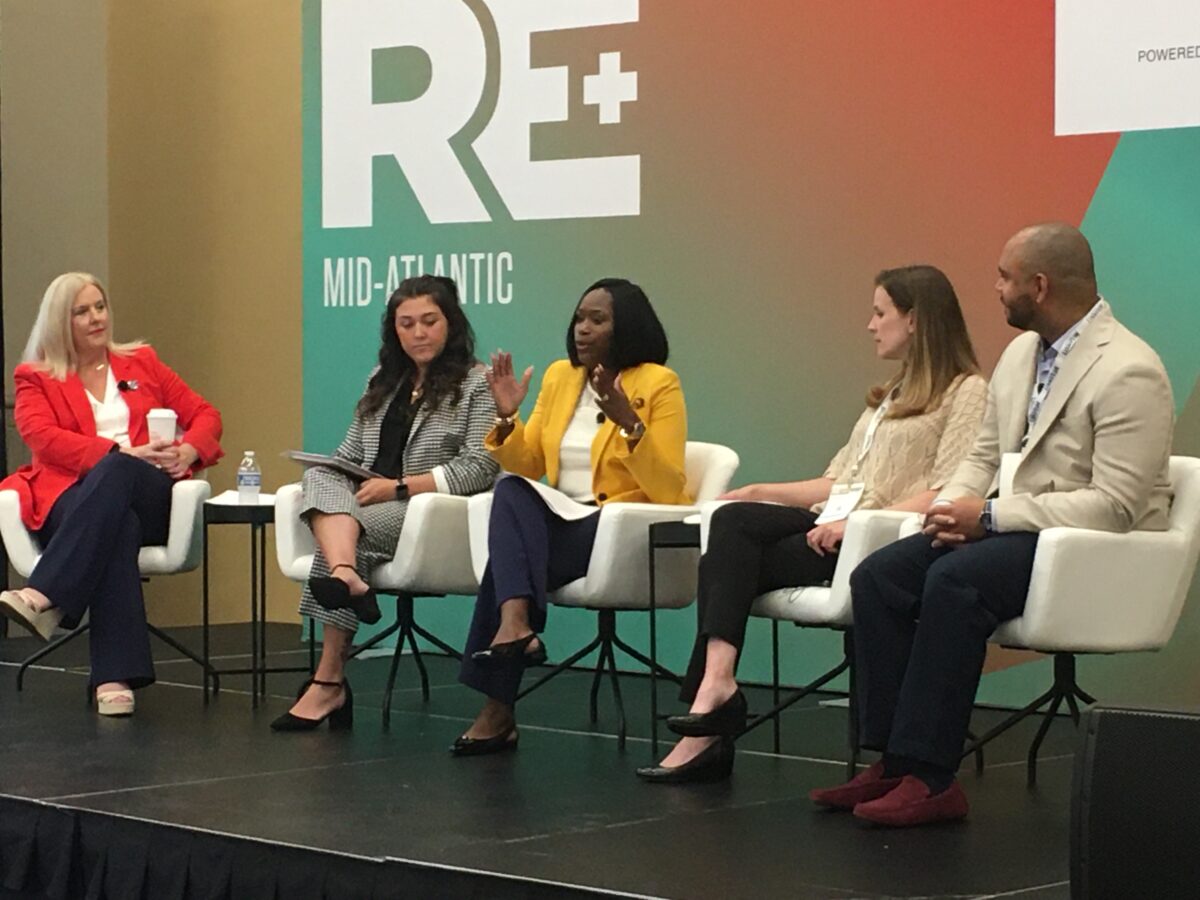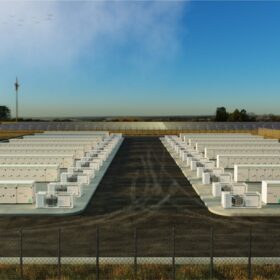The $7 billion Solar for All program administered by the U.S. Environmental Protection Agency (EPA) as part of the Inflation Reduction Act (IRA) seeks to support solar, storage and energy efficiency projects that benefit low-income and disadvantages communities. A panel of stakeholders at last week’s RE+ Mid-Atlantic conference in Philadelphia discussed how the program that aims to expand access to solar faces pending deadlines, possible shifting political winds and complications arising from its compliance requirements.
Solar for All is an aspect of the EPA’s $27 billion Greenhouse Gas Reduction Fund made possible by changes in the Clean Air Act authorized under the IRA. In this sense, the allotment is a creation of the Biden Administration and the RE+ panelists were cognizant of a potential change in administration coming next year. Although as signed legislation, the IRA has the force of law, individual provisions and allotments, particularly those originating from rule changes in federal agencies, that could be affected by new priorities.
Abigail Ross Hopper, president and CEO of the Solar Energy Industries Association (SEIA), a key sponsor of the conference, noted in her introductory remarks that she was fresh from the Republican convention in Milwaukee and found a substantial cadre of support for renewable energy there. At the same time, she indicated prudence dictates that the solar industry should “regime proof” the money Solar for All makes available.
In her role as moderator of the Solar for All panel discussion, Hopper identified the importance of the looming September 30 deadline for the 60 state, tribal and non-profit entities selected by the EPA to contract with developers for specific projects.
“You might pick up that September 30th is six weeks before Election Day,” Hopper said, stressing the deadline was critically important for the durability of the program. “Making sure those funds are obligated will ensure that they continue regardless of what happens at Election Day.”
Maryrose Myrtetus, executive director of Philadelphia Green Capital Corp., which partners with the Pennsylvania Energy Development Authority for the $156 million grant for the state, said the key goal now was to get the money under contract and obligated to make sure that the funding is set aside and secured for the work.
“We’re all working with the EPA right now to get contracts in place by that deadline,” Myrtetus said, adding means vetting installers to make sure they are technically competent, have the right background, are properly insured and provide for consumer protections.
“Some standards that we have include ensuring that consumers can save money starting in year one when they go solar, limiting the escalator on a lease price or [point of total assumption] price, insurance requirements for third party owners and on,” she said.
This means Philadelphia Green Capital will be running an aggressive request for proposal process in the fall to meet the deadline.
Easier said than done. Solar for All’s mandate to serve low- and moderate-income communities as well as neighborhoods disadvantaged by legacy fossil-fuel generation due to pollution and other factors has placed an emphasis on community and distributed solar and storage projects. Such projects are often more complicated than single-family and commercial installations in terms of local permitting, siting, interconnection and managing off-takers. It is not surprising that the panel featured Solar for All grantees with community and multi-family dwelling solar expertise.
Meghan Jennings, distributed energy resources specialist at Rappahannock Electric Cooperative, said her non-profit utility is partnering with Groundswell to provide the sort of experience it needs to not just to develop effective community solar projects but to build in grid resiliency, outage services and other functions to support ratepayers.
Chris Walker, vice president of policy and programs for GRID Alternatives, a multi-state non-profit administering nearly $250 million in program funds, says his organizations’ history developing solar for low-income homeowners in partnership with Habitat for Humanity and other groups will serve as foundational experience for moving forward under Solar for All.
“We thought the affordable housing sector was an important partnership type to pursue, given that there’s also an intersecting housing crisis together with a climate crisis and affordability crisis in the need to really give folks some relief in terms of how much their incomes are paying for their utility costs,” Walker said.
Intensions are good and experience matters, however there are certain unavoidable aspects to using funds under Solar for All. Perhaps more important than acquiring experience in the low-income and community solar markets is finding ways to navigate the labyrinthine requirements for using federal money.
Kristal Virgil, senior vice president at Groundswell Inc., selected as a multi-state non-profit to administer $156 million in EPA grants in the Southeast, said the federal source of the funding triggers a number of compliance issues, including the Davis-Bacon Act that mandates how contractors are paid and compensated, and the Build America/Buy America Act (BABA) that requires U.S.-source products (with a few exceptions, such as electronics) and construction materials used for infrastructure projects funded by the IRA.
“We’re currently in the process of working on a position description now for general counsel to be added to Groundswell’s team because there are several compliance responsibilities that we’re going to need to take on,” Virgil said. “There’s a lot of complexity that we’re currently navigating through and looking to partner with experts. We’re going to need legal and accounting and a robust compliance manager.”
This complexity underscores the reality that Solar for All is not just a $7 billion resource ready to be tapped for solar. It can only be accessed according to very specific procedures. The fact is, there are extremely few contractors and suppliers that are Davis-Bacon and BABA-compliant. This threatens to create monopolies or simply immovable blocks to Solar for All projects.
All in all, the compliance issues facing those entities selected to administer funds under Solar for All appear more pressing than the technical problems attending solar development for low-income households. And the clock is ticking.
This content is protected by copyright and may not be reused. If you want to cooperate with us and would like to reuse some of our content, please contact: editors@pv-magazine.com.









By submitting this form you agree to pv magazine using your data for the purposes of publishing your comment.
Your personal data will only be disclosed or otherwise transmitted to third parties for the purposes of spam filtering or if this is necessary for technical maintenance of the website. Any other transfer to third parties will not take place unless this is justified on the basis of applicable data protection regulations or if pv magazine is legally obliged to do so.
You may revoke this consent at any time with effect for the future, in which case your personal data will be deleted immediately. Otherwise, your data will be deleted if pv magazine has processed your request or the purpose of data storage is fulfilled.
Further information on data privacy can be found in our Data Protection Policy.